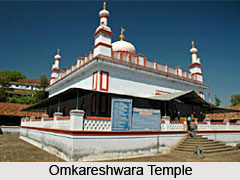 Easily one of the most attractive regions in India, Coorg or Kodagu is an enchanting expanse of natural tourist spot that nestles amid the hills and valleys of the picturesque Western Ghats. The Kodagu people have always stood apart handsome, brave and hospitable. A distinguished martial tradition has given the Indian Army several Generals and Brigadiers.
Easily one of the most attractive regions in India, Coorg or Kodagu is an enchanting expanse of natural tourist spot that nestles amid the hills and valleys of the picturesque Western Ghats. The Kodagu people have always stood apart handsome, brave and hospitable. A distinguished martial tradition has given the Indian Army several Generals and Brigadiers.
Known by their special variants of wearing the saree, the Kodagu women are graceful and beautiful. Kodagu district has several tourist spots of historic, epic and natural importance. Kodagu has three taluks- Madikeri, Virajpet and Somwarpet. Steep hills, valleys and gorges with countless streams that gurgle through them, beckon intrepid trekkers and rock climbers.
Coffee
Coffee, the pause that refreshes is grown extensively in Kodagu on plantations that dot most of the hillsides, with coffee, orange, black pepper and cardamom at the bottom of the slopes, under canopies of huge trees. Well maintained with modern curing and irrigation, these plantations exude a heady fragrance in April, when the coffee bushes blossom. Coffee picking time is from November to March.

Cauvery
Lifeline of the south, Cauvery bubbles up from Talacauvery and reaches ground level at Bhagamandala, 39 kms to the west of Medikeri. One of the seven major rivers of India, Cauvery is the ` Dakshina Ganga` or ` Ganga of the south`.
Bhagamandala
It is a shrine of Bhagandeshwara. It is here the Cauvery merges in joyous and divine form with the rivers Kannike and Sujyothi to form a `Triveni Sangama`. The Bhangandeshwara Temple built in Kerala style on the bank of the Sangama.
Nagarahole National Park
One of the well-maintained game sanctuaries in the country is located closeby, 100kms from Madikeri, 64 kms from Virajpet & 94 kms from Mysore via Hunsur & Murkal. ItGaur, Chital, Sambhar & Barking Deer, Sloth Bear, Langur, Crocodile and over a hundred species of birds and the elusive cats - the Leop is home to herds of Elephant, ard and the Tiger.

Madikeri
District headquarters of Kodagu, and a walker`s delight, is located at a height of 1,525 metres from the sea level. Winding lanes disappearing into green mountains promise tall delight.
Raja`s Seat
Hill ranges, clad in green, rising upto play with silken clouds of myriad hues that is the view from Raja`s Seat, literally meaning the " Seat of the king. " It is here that the kings of Madikeri enjoyed nature and unforgettable sunsets. Feast your eyes on an endless expanse of sun-kissed greenery.
Omkareshwara Temple
Built by Lingaraja in 1820 AD and dedicated to Lord Shiva, this temple is a quaint mix of Islamic and Gothic styles. The gold leaf inscription atop, accessed through a narrow flight of interesting steps used by the king to survey his Kingdom, the fishes in the pond which leap in symphony to gobble food offered to them, are all worth noticing. The annual `Teppothasava` or "Boat Festival" is a memorable event.

Madikeri Fort
A 19th century fort that witnessed several heroic battle, this Fort now houses a temple, a chapped and a small museum. The view of Madikeri is, quite simply, stunning. The beautiful now houses Govt. Offices of the District Administration.
Nalkunadu Palace
Built in 1792 AD by Dodda Veerarajendra, this beautiful palace is close to Tadiyendamol. To get here, you have to travel 32 kms from Madikeri through Napoklu and Kakkabbe. Buses too, are available.
Abbey Falls
7 kms from Madikeri amid a valley in a coffee- cardamom plantation, where water drops from 70 ft. You can have a great splash of a picnic.
Iruppu Falls
48 kms from Virajpet on the banks of the pristine Lakshmanatirtha River, which descends in joyous leaps, to salute the Shiva Temple believed to have been consecrated by Lord Rama himself. A wonderful getaway spot, on the way to Kutta from Gonikoppal.

Nisargadhama- Harangi
An island surrounded by the Cauvery river, Nisargadhama is a picturesque picnic sport that offers elephant rides, deer prancing about and boat rides. There are well equipped, thatched cottages, 3 kms from Kushalnagar. The nearby Buddhist refugee camps at Bylakuppe offer prayerful silence in expansive halls with beautiful 40 feet high idols of the Buddha and Padmasambhava, his disciple.
How to get there ?
Air - No direct air connection.
Rail - Kodagu is the only district in Karnataka without an inch of rail track
Road - Kodagu is accessible only by road. Many buses operated by SKRTC. Pass through Madikeri enroute to Mangalore. KSTDC organises regular package tours.



















